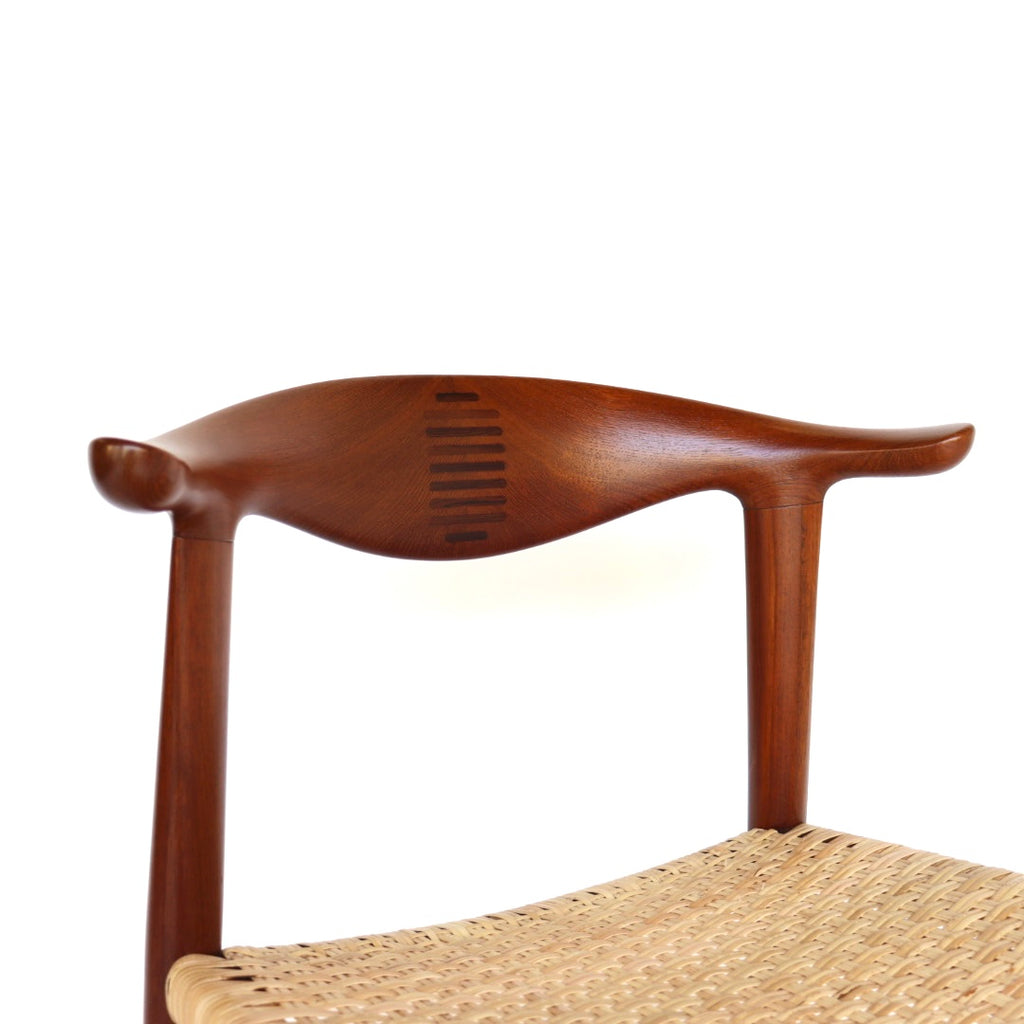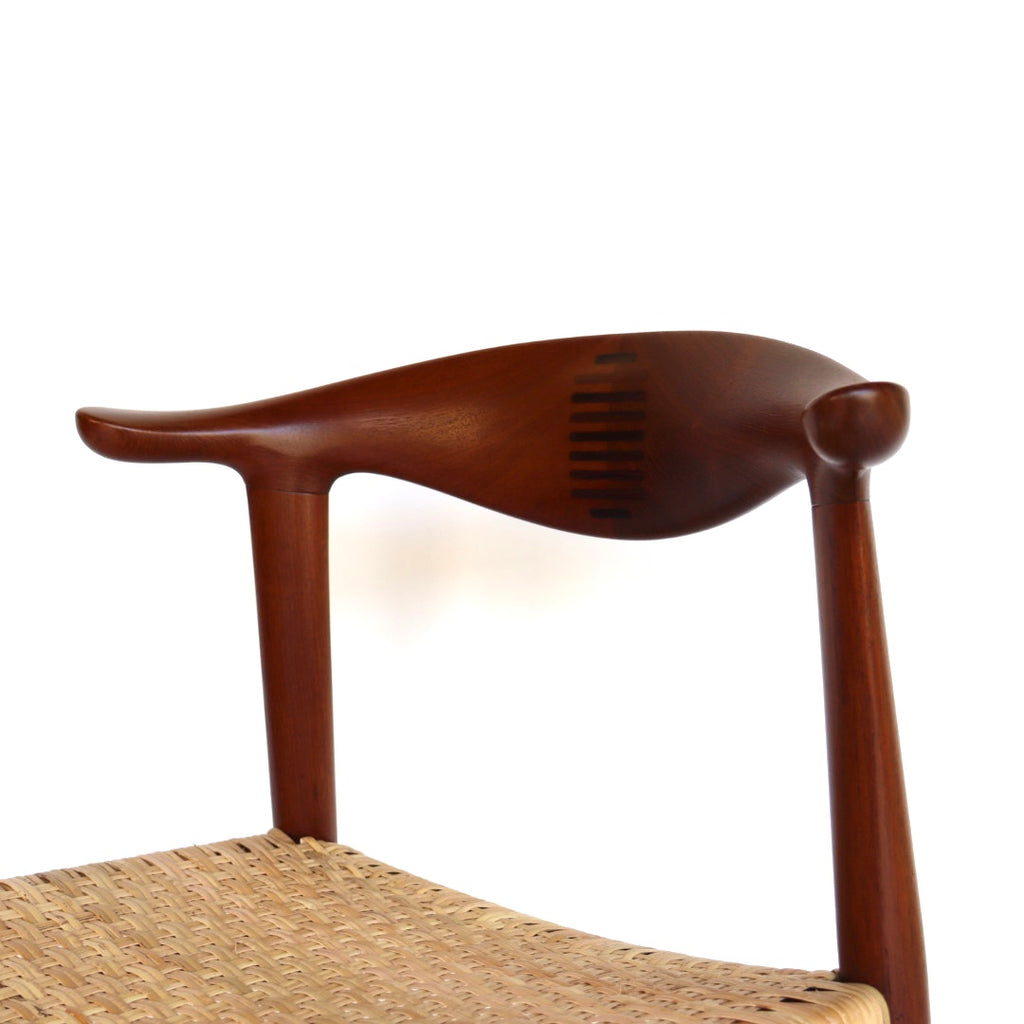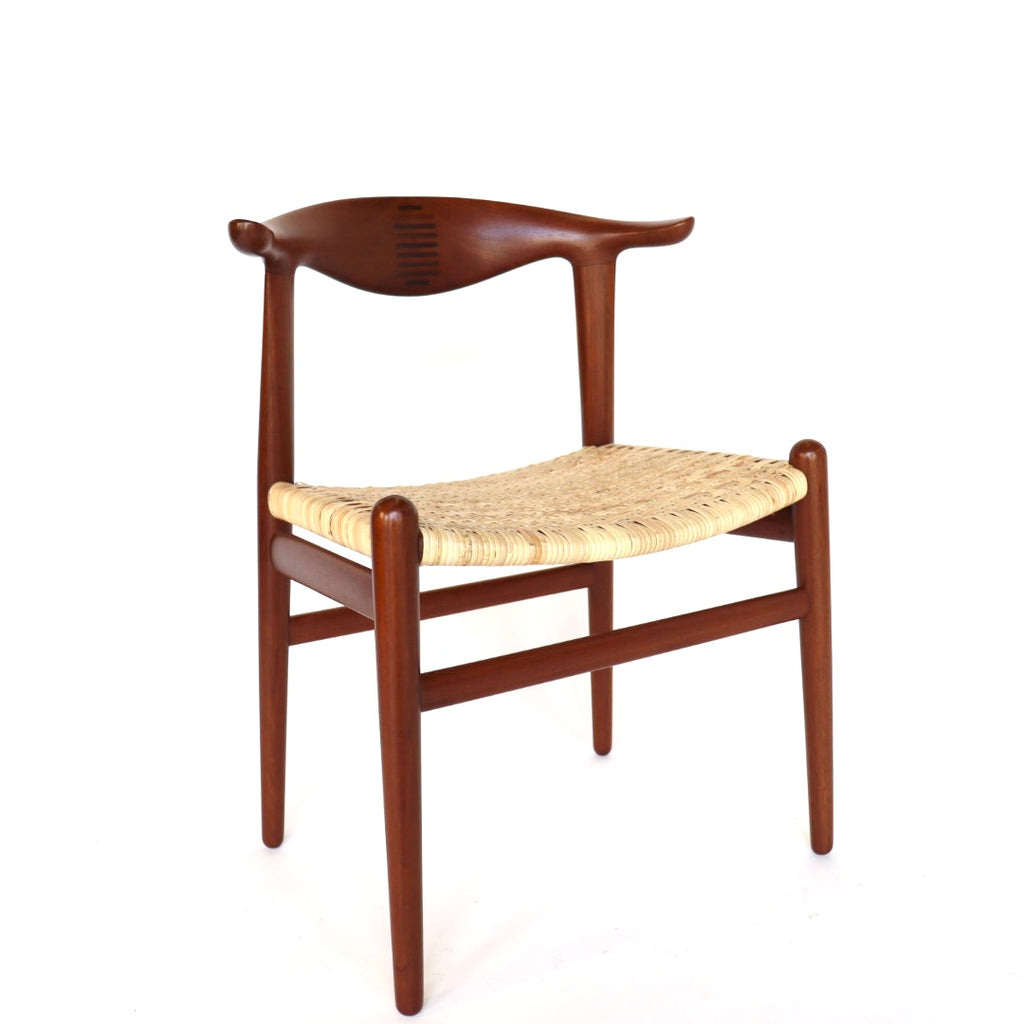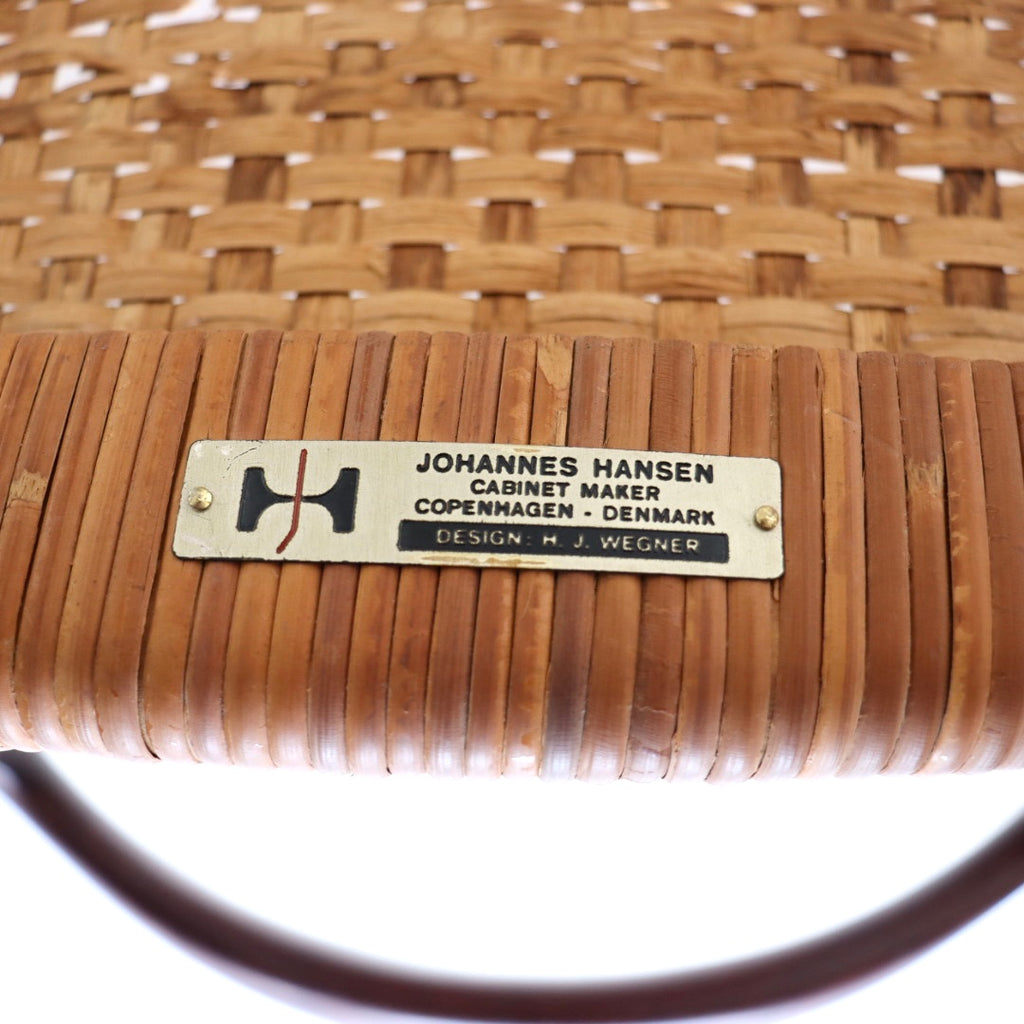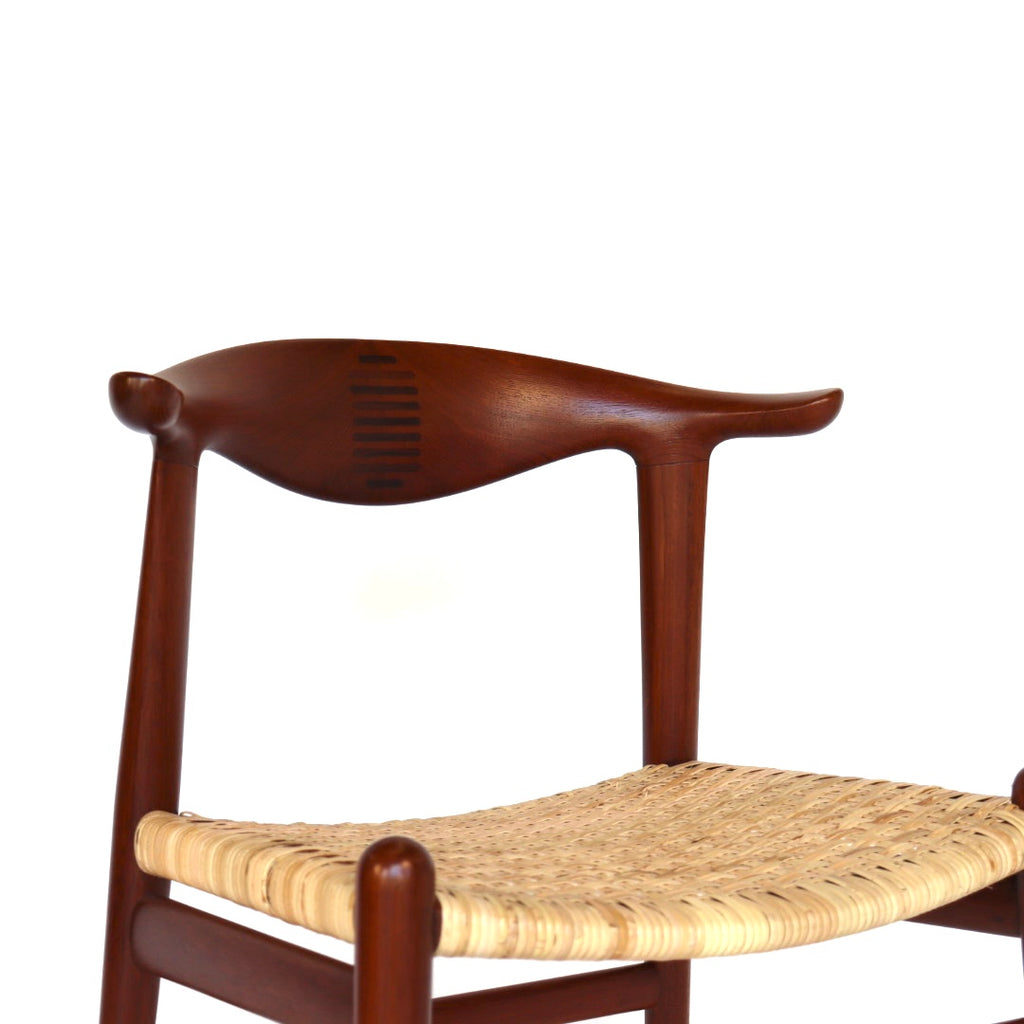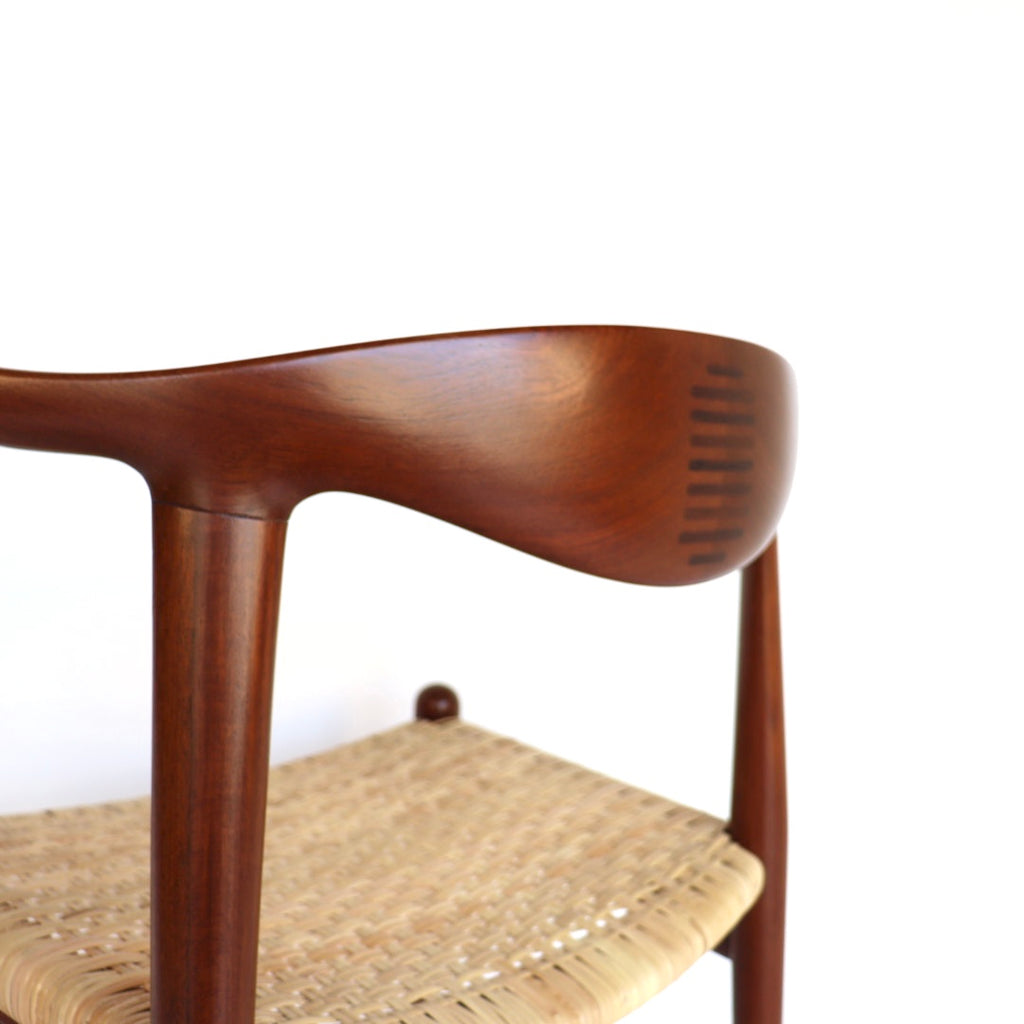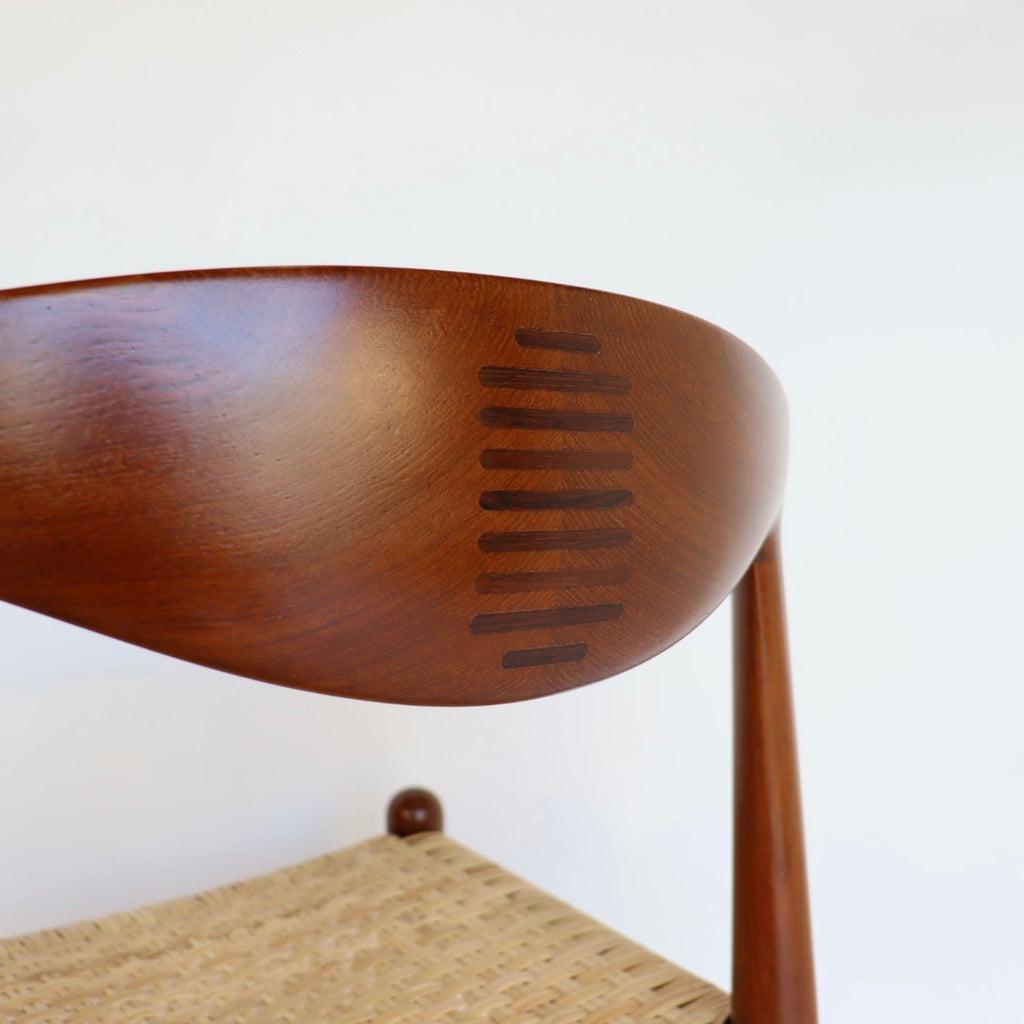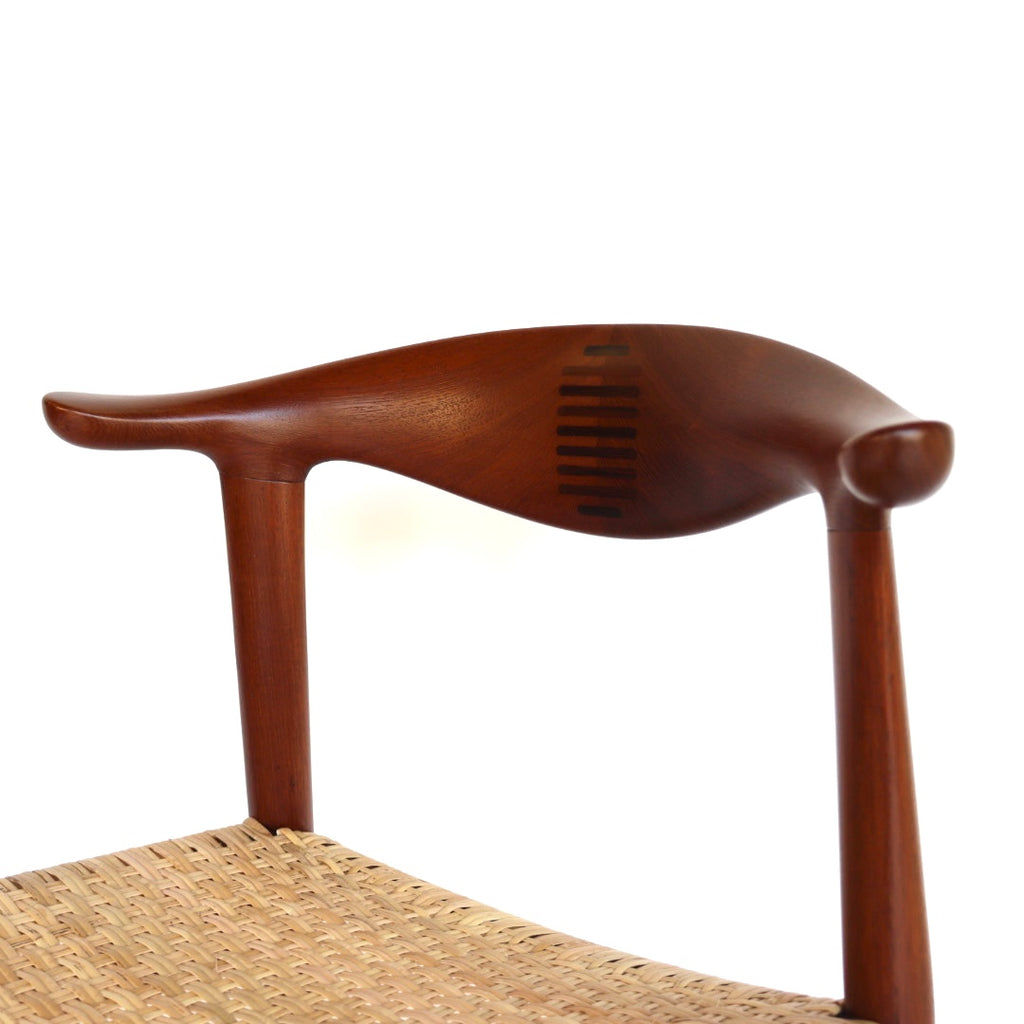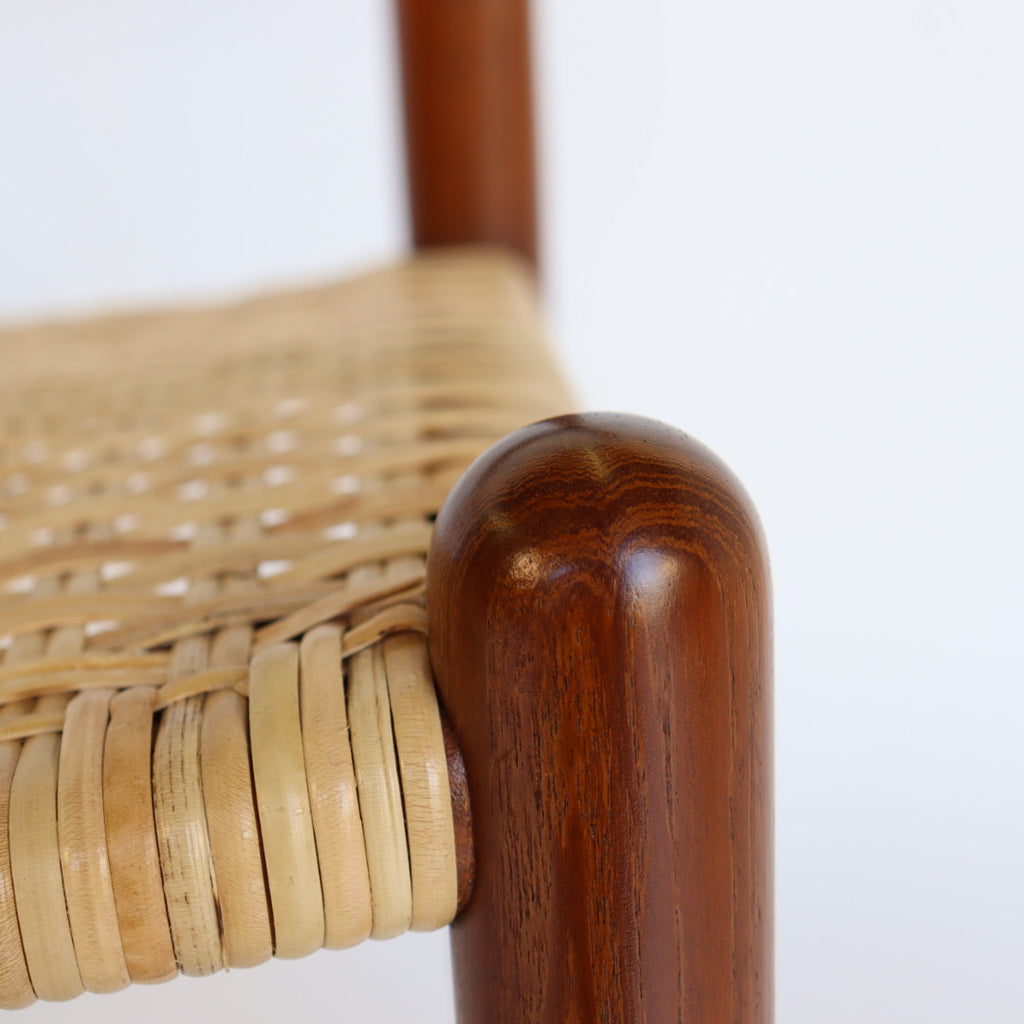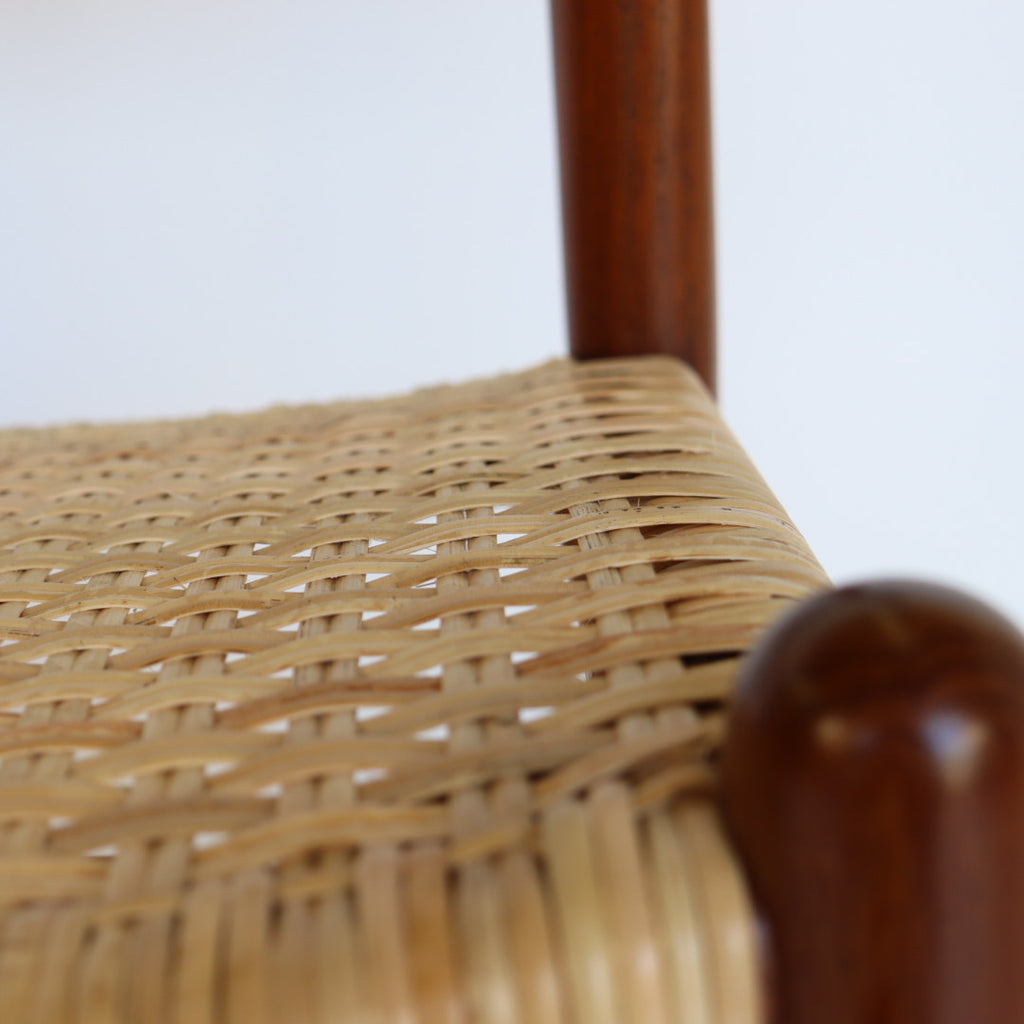Cow Horn Chair in Teak by Hans J. Wegner for Johannes Hansen Model Jh-505
The chair is in excellent restored condition with a new cane seat. Would work perfectly as a desk chair.
Extremely rare. Teak, rosewood, and cane Hans Wegner Cow Horn chair manufactured by Johannes Hansen by hand by only a few craftsman. Rarely seen and extraordinarily crafted with inlays of Brazilian rosewood which lock the back joint. Model JH 505. Designed 1952. Metal tags on chair show authenticity. These chairs are a development of the form and style of The Round Chair but more compact with short elbow rests rather than the longer arm rests of The Round Chair. This means that the chair can be pushed in closer to the table and it is easier to get up from the chair when sitting at the table. This would work great as a desk chair. Provides excellent ergonomic support. *We do have a set of 4 Cow Horn Chairs in oak in leather* Contact us about details.
Dimensions: 23 W (at arms) x 29 H x 18D (Seat Height is 16.5)
Wegner designed the JH505 Chair in 1952 as an immediate follow up to his breakthrough with the Round Chair also known as "The Chair". The continuity in shape and philosophy is obvious. But serving a different purpose Wegner created a chair that was to play an important role in his following line of works.
Wanting to pay homage to the breathtaking beauty of solid wood manually carved into organic shapes, Wegner decided to make a compact chair. Hence the number of pieces of solid wood used to form the armrests and back was reduced to only two pieces (compared to the Round Chair with three), joined in the middle. The joint obviously needs to be aligned with the grains of the wood with some kind of tenon and could be dowelled, but in this case Wegner decided that instead of hiding the unavoidable joint he would rather enhance it and make it a decorative feature of the design. To obtain the full visible effect, Wegner used wood of a contrasting Brazilian Rosewood.
This original idea would later become a characteristic trademark in many of his works and it is an important example of his honest and craftsman-like approach to design.


